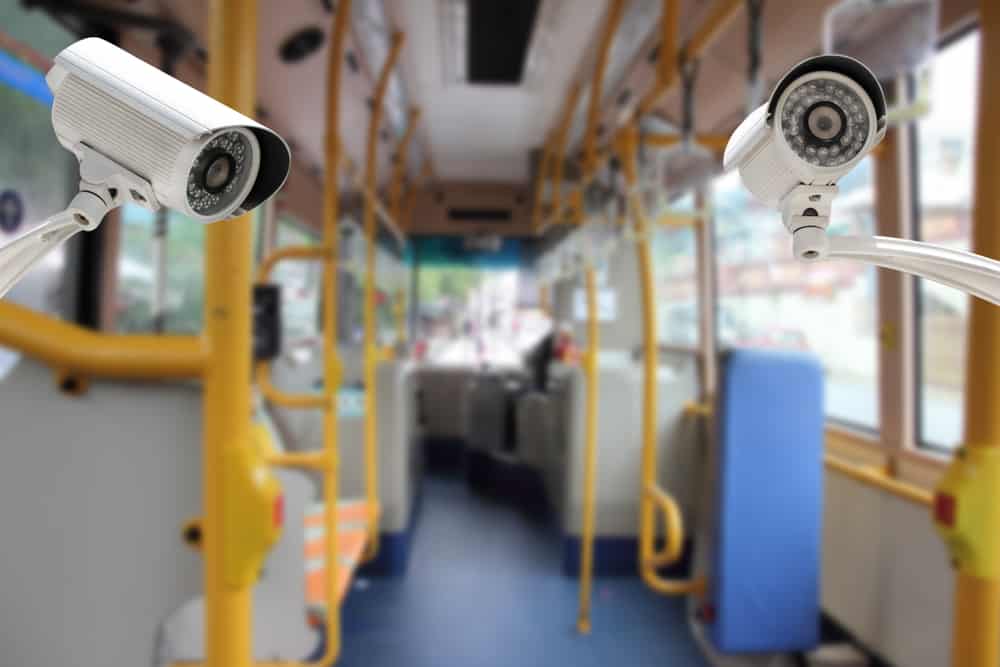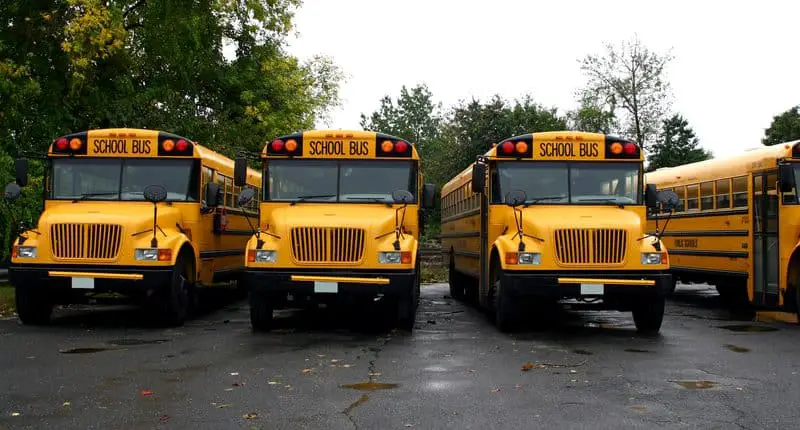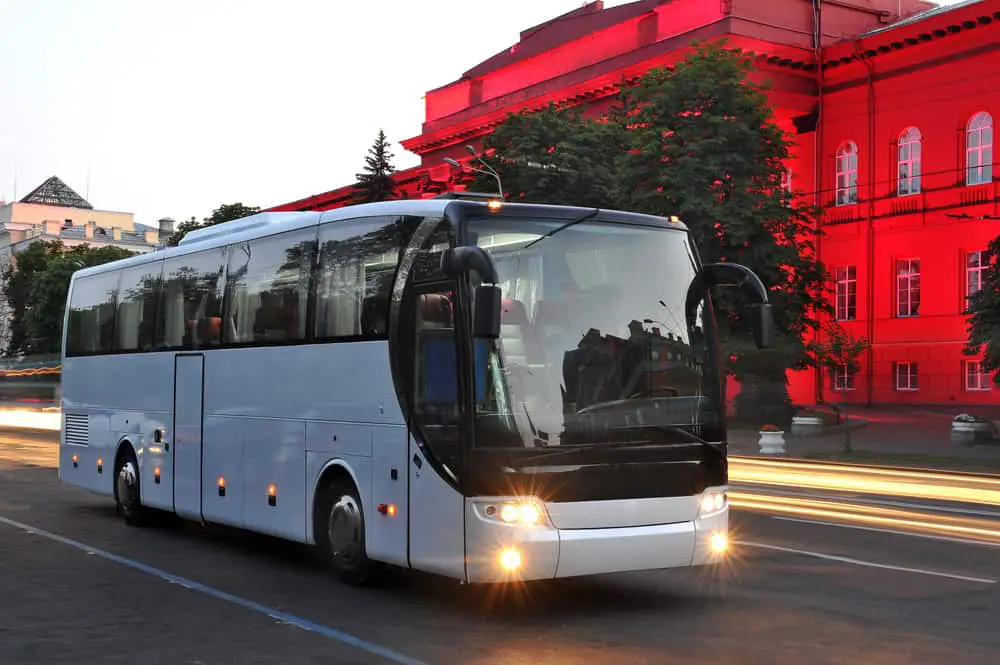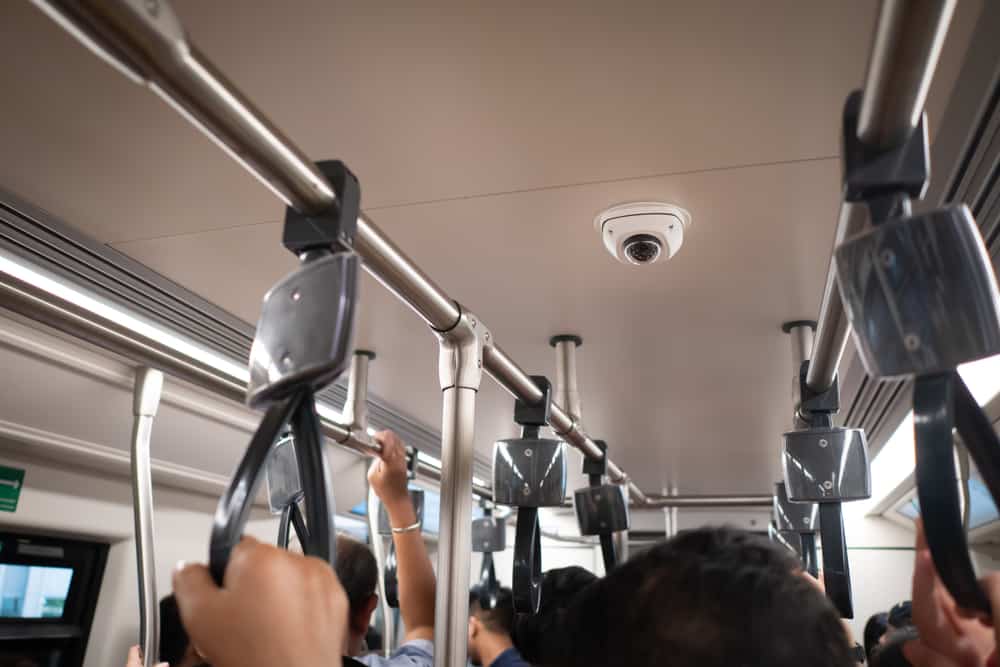
Big Brother is always watching us! While it may not be in the Orwellian context of totalitarianism and dictatorship, cameras are everywhere these days.
When we walk into a shop, there is nearly always CCTV. Schools have cameras, and street-level surveillance cameras capture license-plate information, traffic infringements, and more. So, do buses also have cameras?
Many buses, including school buses and motor coaches, install cameras inside and outside the vehicle. School districts in 24 states have legalized stop-arm cameras on school buses for the safety of the children getting on and off. Cameras gather evidence on motorists, passengers, and drivers.
While cameras and CCTV are often contentious due to the possible violation of a person’s privacy, installing cameras on buses has its benefits.
Camera footage can help solve crimes and determine the causes of accidents, provided it hasn’t been overwritten.
When people are aware of surveillance, they are less likely to break the law or create trouble. So, we can welcome Big Brother to our buses.
Buses With Cameras
Although not every bus or fleet of buses has cameras installed, it is a fast-growing trend among bus companies and school districts.
School issues, road accidents caused by irresponsible driving by motorists or bus drivers, or passenger misbehavior often drive them to install exterior and interior cameras. Exterior cameras also give the drivers a better side view.
Cameras On School Buses

An increasing number of states are putting measures in place to catch and punish people who illegally pass stationary school buses.
Despite being illegal in all states, a 2019 survey found that during a school year across the country, 17 million motorists pass buses illegally while picking up or dropping off children. This results in far too many injuries and fatalities.
A retractable stop-arm on the buses’ exteriors comes with a built-in camera. This technology can protect children boarding and disembarking school buses where the cities allow school districts to implement it.
Drivers extend the stop-arm when they stop for children en route. If motorists pass the bus while it is stationary, their liability for any incident is recorded as evidence.
Interior cameras can also help keep students on school buses safe. They help the driver monitor situations on the bus, such as bullying, vandalism, and medical emergencies, allowing administrators to respond quickly to problems.
Video footage of what goes on inside the school bus can help with parent inquiries regarding incidents on the bus. It is also valuable information for locating missing students.
Most school bus cameras record the trip from beginning to end and only switch off approximately ten minutes after the bus switches off the engine. They also usually have audio recordings.
Some cameras only have enough storage to record one or two days’ worth of footage. Schools can download the footage after an incident. Then they can store it for as long as necessary.
Dash cams give a full view of what is happening on the road and inside the driver’s cab. Internet-connected models allow the capturing and uploading of high-quality footage to a cloud-based dashboard in real time.
Some advanced dash cams have features that sound an alarm inside the cab when the driver engages in risky behavior, such as swerving, speeding, or harsh braking.
Cameras On Charter Buses And Motor Coaches

Most modern fleets install cameras on their buses. Many buses install cameras on the rear and sides to give a complete perimeter view.
One of the main types of accidents occurs as sideswipes, where a bus driver may change lanes and hit another vehicle in his blind spot. These outside cameras transmit the view to a screen in the driver’s cab, giving him a better idea of oncoming vehicles.
Interior cameras are becoming vital for safety these days too. There are no guarantees regarding the nature of passengers on board. Violence and vandalism are realities in our world today, and even traveling on a bus has its risks.
Cameras on buses provide clarity on all sorts of issues. When bus companies have to deal with complaints about drivers’ driving irresponsibly or blaming them for accidents involving other vehicles, it simplifies matters considerably when there is video footage.
The same can be said for incidents involving passengers. Sometimes passengers become unruly and damage the interior.
A driver may not know who is responsible, but video footage will provide proof, and the bus company can charge the correct offender for the repairs.
Where Do Buses Place Their Cameras?

As public transport safety gains more attention, bus companies are covering themselves more by installing cameras.
They usually place them at the doors, the front, and the middle of the vehicle’s interior. It also depends on how many cameras they can afford to install on each bus.
How Long Do Buses Keep Their Camera Footage?
Bus cameras have different capacities for retaining footage. Some can only keep as little as two days of video recording, while others can retain up to 28 days.
If there’s an incident on a bus, it is best to download it the same day or as soon as possible before it gets overwritten by new recordings.
How Do Buses Transmit Camera Footage To A Control Center?
Most buses don’t transmit video to a control center in real time because it is too expensive.
Usually, the camera records the footage, which the bus company downloads to storage when the bus returns to the bus station. If an investigation of an incident is necessary, these recordings can provide valuable information.
Systems that transmit live footage to control centers usually use cell phone technology, like computers inside police vehicles that connect to their headquarters in real time.
Conclusion
While not every bus on the road has cameras installed, many school buses and motor coaches have followed the growing trend.
They can help to prevent accidents, and if one does occur, they can provide valuable information regarding the cause. Inside and outside cameras can also help to protect children on school buses.
